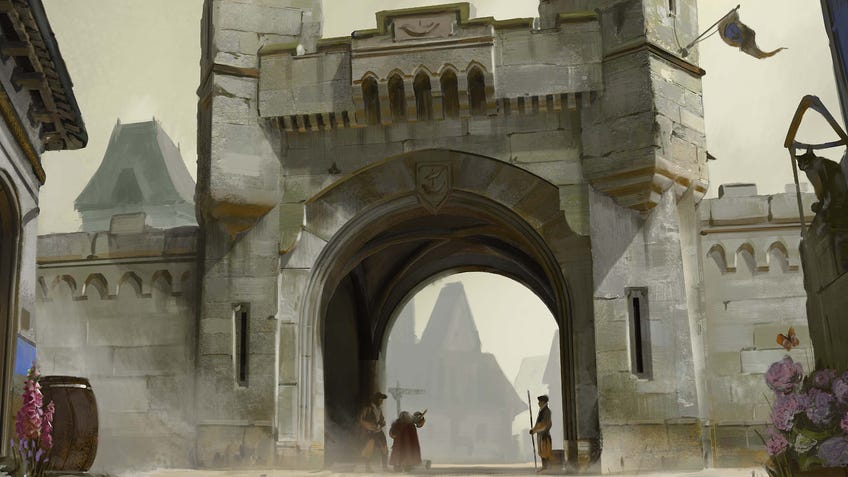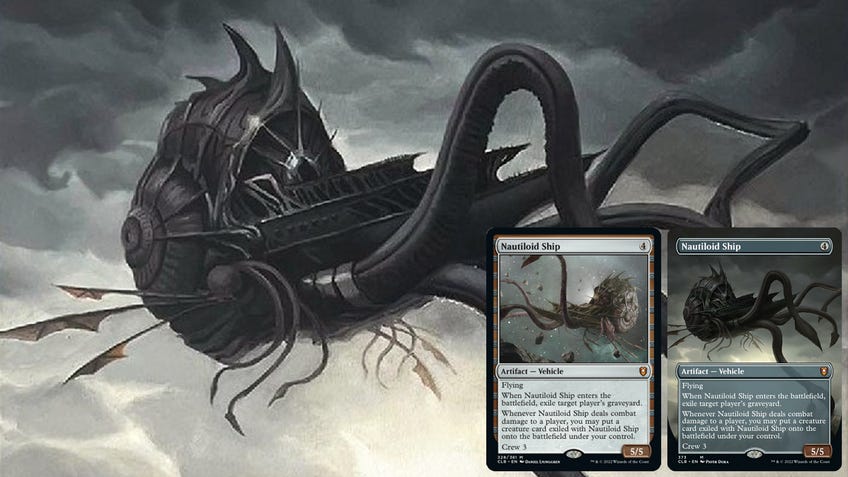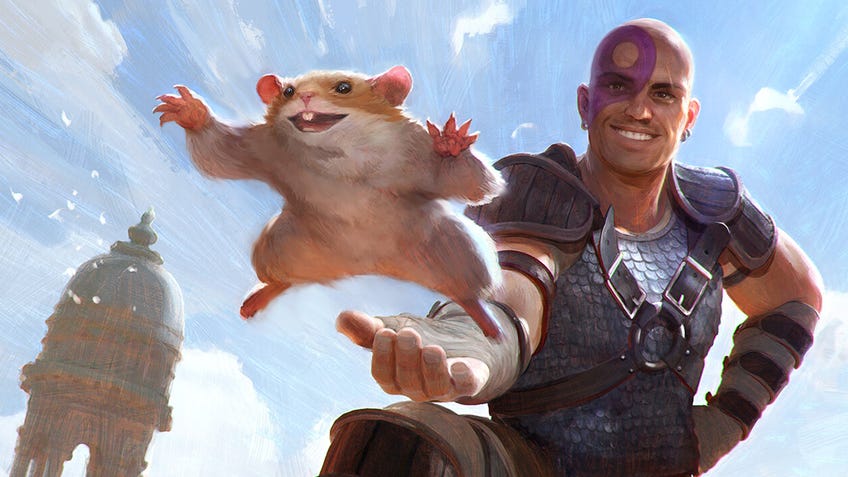Magic: The Gathering’s second D&D set Battle for Baldur’s Gate offers plenty for fans of both games
You better Bhaal-leve it.
The latest Magic: The Gathering set sees us returning to the universe of Dungeons & Dragons, a crossover which is responsible for one of the most entertaining MTG sets of the last few years thanks to Adventures in the Forgotten Realms in 2021. Commander Legends: Battle for Baldur’s Gate brings even more dragons, but only one more dungeon this time around.
Battle for Baldur’s Gate is the first Magic: The Gathering set of this year that’s actually designed for Commander on purpose, which means we can’t complain about there being too many Commander cards. Everyone’s relieved about that, right? It’s also the second-ever Commander Legends set after the 2020 original, designed to not only bolster the card selection in the popular multiplayer format, but capable of working in both Draft and Sealed.
To address the biggest issue with Commander Legends: Battle for Baldur’s Gate: that’s simply too many words, please stop. With that out of the way, let’s talk about the mechanics, kicking off with the returning ones. First up are adventure cards, which are creatures or artifacts that can be cast as a sorcery or instant first, then cast normally later on. It’s an excellent mechanic, and it’s good to see it back again. Then you’ve got myriad, which makes copies of your creatures to allow you to attack everyone equally and mess around with ‘enter the battlefield’ effects, which is great.
We’ve got gates as a land type again in Battle for Baldur’s Gate - which is just the most on-the-nose and wonderfully brazen thing imaginable - more dragons and a new dungeon in the form of the Undercity. Introduced in Adventures in Forgotten Realms, dungeons are special cards that have multiple rooms on them; as you venture into them, you trigger different effects.
The Undercity is linked to a new D&D-inspired mechanic called initiative. Taking the initiative is something you can do by playing a card that gives it to you, hitting someone who has initiative or when the player with it leaves the game.
It’s nice to see things feeling a little more focused on the buildup than just the payoff in Commander Legends: Battle for Baldur’s Gate.
Initiative has a few bonuses. For starters, when you take it, and then in your upkeep while you have it, you get to venture into the Undercity. Doing so offers effects such as putting a land card into your hand, making creatures stronger and, if you finish it, the chance to play a creature card for free. Initiative also boosts the power of some cards but, perhaps most importantly, helps to encourage players to keep hitting each other, which can help big games avoid the crushing stalemates they often end up in.
The other brand-new mechanic is backgrounds. These are enchantment cards that mostly grant your commander creatures new abilities. This can be things like allowing your commanders to change into other creatures, becoming engines for sacrifice mechanics or something else. You get to choose one of these to be a second commander with most of the legendary creatures in this set. This is a really interesting way to add in new wrinkles and customisation options for legendary creatures. It’s clearly a riff on partner commanders, but also feels deeply flavourful in a way that would leave Guy Fieri salivating.

Onto the cards themselves, there are a plethora of different Dungeons & Dragons characters represented in Battle for Baldur’s Gate. Because the aim of this set is basically legendary creatures, it’s allowed the designers to pluck characters from within the mythos of D&D and plonk them into Magic: The Gathering. We’ve got the likes of Elminster, for example, who is a five-mana White and Blue planeswalker that can be your commander, draws cards, lets you exile cards to make 1/1 flying Faerie Dragons and also lets you reduce the cost of cards by scrying.
There are also a lot of dragons. So many new dragons. Miirym, Sentinel Wyrm is a six-mana Green, Blue and Red 6/6 that creates copies of your dragons as they enter the battlefield - which is so dramatically absurd that it’s hard not to want to hate it/fall in love with it.
Battle for Baldur’s Gate is another excellent example of how well MTG can handle crossovers in terms of both the flavour of the worlds and the mechanics.
What’s especially interesting here is that there is a mythic dragon cycle in the form of the ancient dragons. Each of these has a powerful ability linked to rolling a die - a d20, of course. The Red Copper Dragon nets you treasure tokens, the Black Brass Dragon allows you to resurrect the dead, the Blue Silver Dragon lets you draw cards, the White Gold Dragon creates tokens and the Green Bronze Dragon lets you put +1/+1 counters on creatures. Each of these is really powerful, especially if you’re playing with cards that let you manipulate dice rolls, but each of them is also fairly mana-heavy.
It feels as though the high mana values are designed to help slow things down a bit, which is probably a good thing given the general power level we see in modern-day Magic: The Gathering. This wouldn’t really be viable in a Standard set, so it’s nice to see things feeling a little more focused on the buildup than just the payoff in Commander Legends: Battle for Baldur’s Gate.
There’s also something to be said for the fact that this latest Dungeons & Dragons set has an even wider appeal than Adventures in the Forgotten Realms - mostly thanks to Baldur's Gate 3, which sees itself represented in the set thanks to a few powerhouse cards. There will be players of the video game who see Lae’zel or the Nautiloid Ship in MTG form who might find their interests piqued. These are D&D things first and foremost, but it’s interesting to see an extra layer to this crossover.
In terms of gameplay, there’s a good mix of cards and mechanics, and the various colour pairings all feel well-defined and fairly malleable. If you end up in Green and Blue or Red and Green, you’ll likely want to focus on dragons, but in slightly different ways - or you can combine the three colours for even more options. It’s nice to be able to draft a set and feel like you can take it in a lot of ways, and Battle for Baldur’s Gate nails it.

Playing this set is incredibly enjoyable because it feels varied and deep. There are so many cards here and so many different options for who should lead a drafted deck as commander, and that’s ideal. Commander Legends was an absurdly strong set and, while this doesn’t feel like it has the same power level, Battle for Baldur’s Gate feels just as good to sit down and play. Although it does suffer from the MTG sickness of word soup on every card, it’s a little easier to digest when you’re viewing the game through a D&D lens.
Overall, though, Commander Legends: Battle for Baldur’s Gate is another excellent example of how well MTG can handle crossovers in terms of both the flavour of the worlds and the mechanics, too. It’s a blast to draft, has plenty of cool cards to pick up for long-term Commander players and could bring in new players thanks to yet more D&D references.


